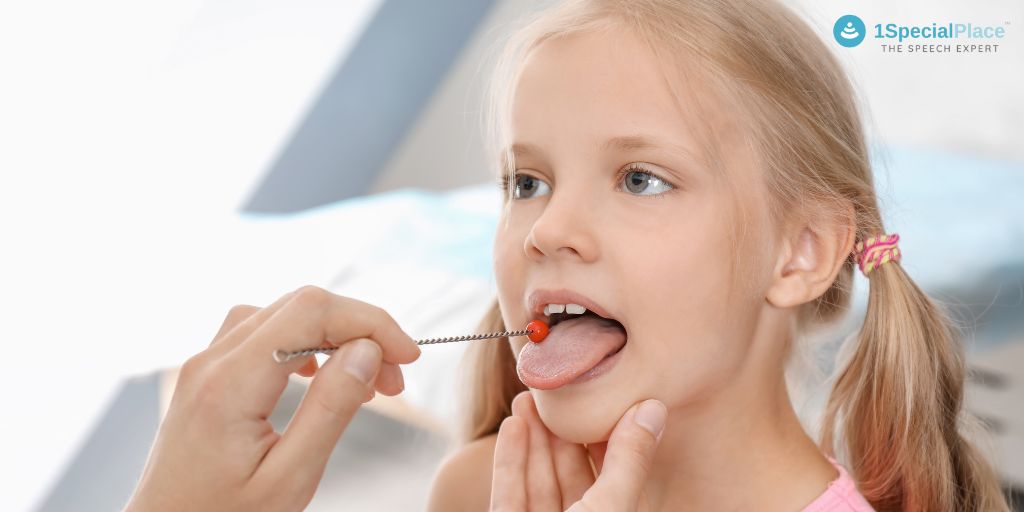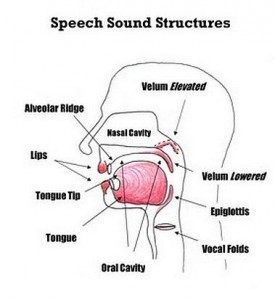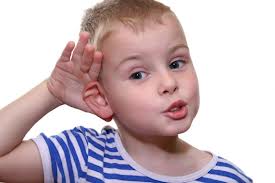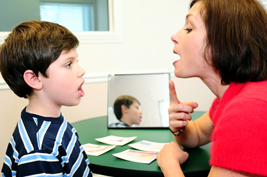
Articulation Therapy: A Beginner’s Guide
Articulation Therapy: A Beginner’s Guide
Misarticulation or the lack of correct pronunciation of sounds can hinder good communication. Sounds are learnt developmentally and hence as the child grows, sounds would typically become clearer and more adult-like. However, at times, such clarity is not reached. [Click here to read more about typical development of articulation] 
The sounds we produce use different positions of the tongue, lips, palate and other articulatory or speech sound structures.
Correct articulation, for many of us, is taken for granted and suspected to be quite simple. However, it requires precision of placement, good coordination and movement of articulators. Let’s understand the complexity of correct sound production through a simple exercise! Let’s say the sound /p/slowly. Now, the sound /n/. When saying each slowly, think about where your lips and tongue are positioned and what they are doing. Also, try to feel where the air from your throat is going while saying each sound. If noticed carefully – the sounds use different positions of the tongue and lips and the air moves through different airways in the mouth and nose!
A speech therapist assists and guides an individual with misarticulation to help them produce the sound correctly. For everyone in articulation therapy, an assessment is carefully done to note the sounds that are mispronounced. A plan for therapy is drawn out based on the assessment results and thereafter therapy is undertaken. There are a variety of methods and philosophies that would guide a therapist along the path of therapy.
Articulation therapy should incorporate the following five basic aspects:
-
Keeping it multisensory.
The best way to practice and learn articulation, in my opinion, is by making sure the learning is holistic! It should involve as many senses as possible. The hearing/ listening, seeing, feeling should all be combined in the learning process. It enables the child to learn and even remember better.
For example, to teach the sound /m/, I would love to get the child to feel my lips and then his own. Listen to the sound when eyes are open and closed. Also, feel the vibrations at the neck. I would also like to use a small mirror and show how it fogs when its kept near the nose while saying the sound.
Parents of children in therapy can learn these strategies to reinforce the learning at home. A speech therapist, typically would build the correct articulation within the session so that the parent can just follow up and ensure the child continues to use the same at home. Help the child to ‘listen, see, feel’ & practice
-
Teaching correct articulatory placement.
Teaching the right position of the tongue on the palate or teeth can be a good way to get the child to learn correct articulation. Once again, use different ways to make the child understand. Show and listen– letting the child see and hear correct articulation when you (the parent / therapist) make it. Use a mirror or even a drawing of the tongue position can be useful.
However, not all children will be able to follow this method. And therefore, other strategies must be employed to teach them to learn.
Parents of children in articulation therapy must also be aware of correct placement. Showing the child correctly, at home, when s/he forgets, can help the child to learn the skill faster. Discuss and ask the therapist about correct positions and placements when in doubt.
Teaching the child correct articulatory placements is important
-
Encouraging fun and play while learning.
Articulation therapy has at times been considered quite boring. This may be attributed to the fact that it may incorporate the use of a lot of drills (i.e. the repetition of an task several times such as repeating the production of /s/ sound). As I see it, this becomes uninteresting for the child and the therapist after a few sessions. Therefore, I would encourage the use of fun games, stories, toys to help the child to learn to produce the sound minus the frequent use of drills.
Older children in articulation therapy may engage in drills more often, since it is the fastest and best way to get the child to practice a sound often in a limited amount of time. However, it should not be the largest chunk of the session but maybe a recap at the end of the session or a drill in the mid of the session.
The recap and practice at home with a parent, should also be a combination of fun as well as practice through drills. Replicate the games in the session or think out of the box!
-
Sounds taught first.
Generally, sounds that are ‘visible’ are taught first. These are sounds wherein articulators are easily seen and hence become easier to replicate. This would help a child to learn the sounds easily, at first, and therefore encourage them to continue with the learning.
For example, the sounds /p/ would probably be taught before /k/.
Parents should keep this in mind. If they have a pair of sounds to work with, they can always encourage the one that is easier to teach at first and then move to the tougher one (i.e. the one that is not as visible).
-
Practicing the sound for generalization.
A sound taught correctly such as /l/, would be later even encouraged in syllables, words, sentences and then conversations. The sound must be practiced in a variety of ways – it must be generalized!
Using the /l/ sound example. It is first taught by itself. Once the sound is achieved, then it would be taught with different vowels e.g. /la/, /li/, /lu/, /lo/. Next, in words such as /low/ or /allow/ or /all/. This would be followed by use of /l/ in sentences (e.g. Lions roar loudly). This may be followed by use of /l/ sound in different conversations.
Parents can easily get involved in generalization of sound in words, sentences and in conversation. A therapist would be able to gain a lot more if you work alongside the therapist and at his/her pace with your child. For instance, if the therapist is working on a particular sound at word level – get the child to practice that, using word lists or fun games, as often as possible.
***
Please note that these are basic guidelines for articulation therapy. A child’s individual assessment results would guide a speech therapist for specific inputs which may include working on listening to sound and sound pairs or practicing specific sounds before the other (different from above) etc.
***
Subscribe with us to receive more articles on Articulation therapy across different sound groups.
- What is speech therapy and what Speech Therapist Do? - December 22, 2022
- 5 Simple Ideas to Make Flashcards Fun - June 28, 2018
- Should I use ‘NO’ with my child? - June 24, 2018


Leave a Comment
(0 Comments)